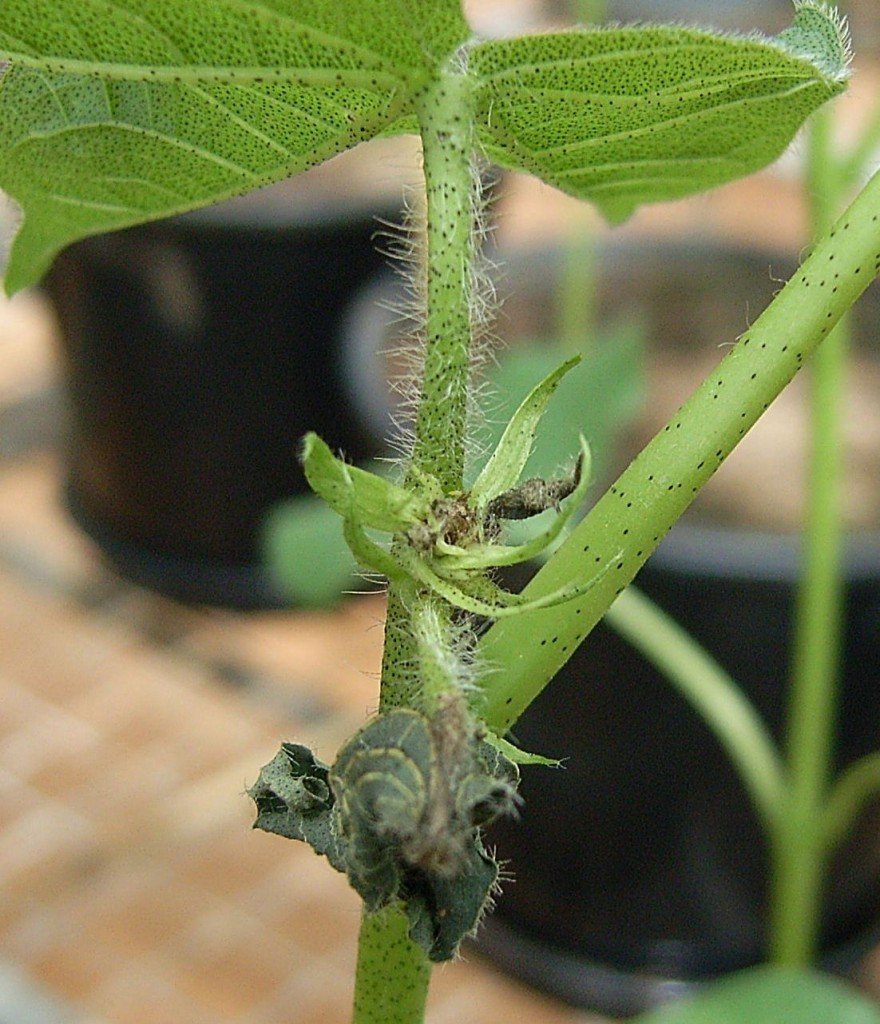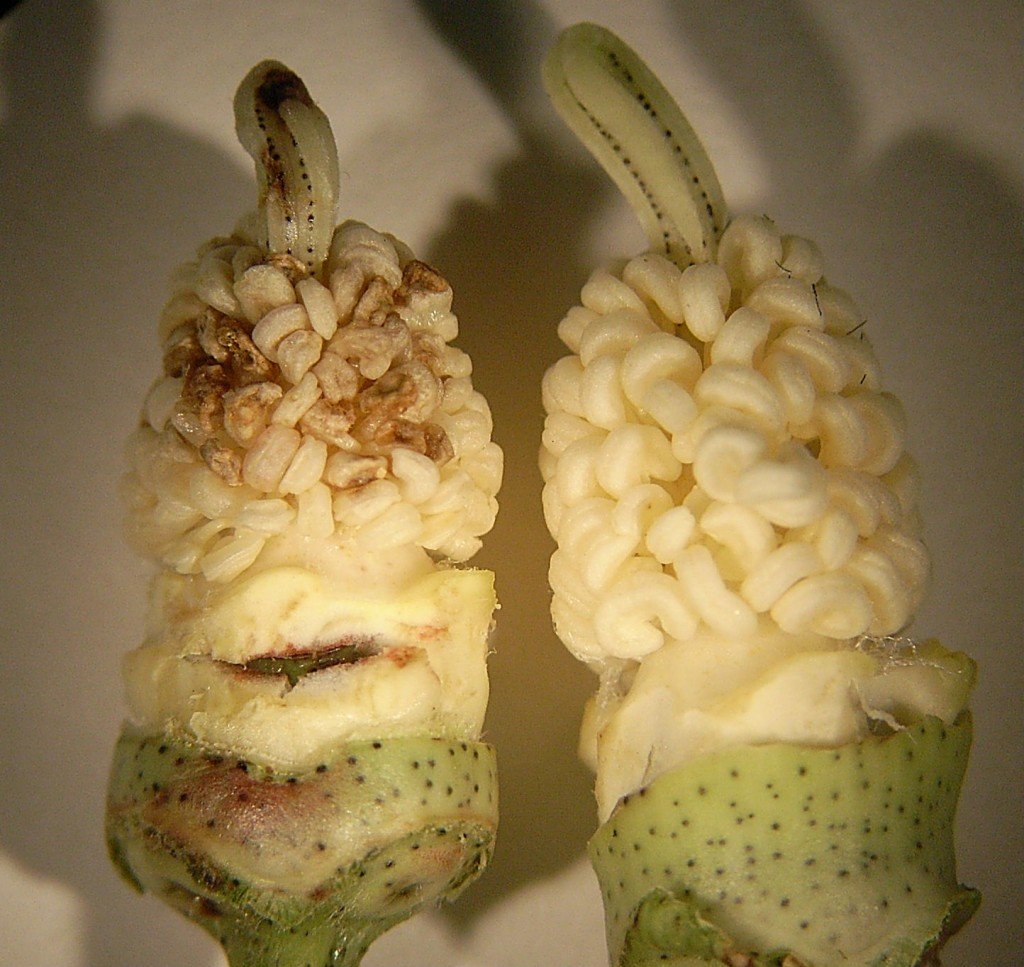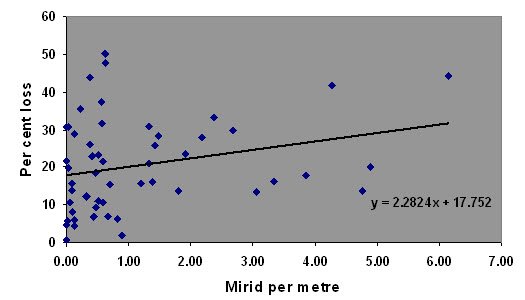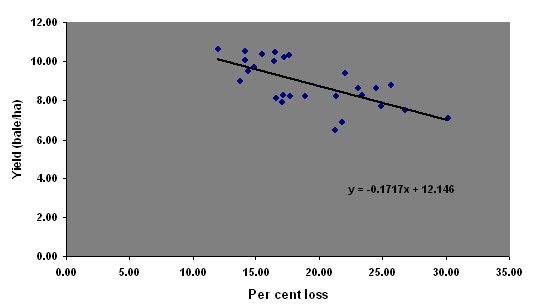There have been a number of reports of mirid infestation in cotton on the Central Highlands and at St George. Recent research has focused on the development of plant-based thresholds that should make it easier to make decisions about mirid control.

Typical mirid damage to a cotton seedling. Wilting and browning of terminal.
How do mirids damage early cotton?
In the early stages of cotton, mirids feed on growing tips and leaves causing them to turn black (Figure 1).
As the crop develops, mirids move to the squares (a preferred food source), where they feed on the ovules and anthers (Figure 2). Damage to the ovules reduces the production of auxins, the chemical responsible for retaining squares on the plants. The decline in auxins, and the production of ethylene in response to feeding results in squares shedding.
Plant-based thresholds to improve decision making.
The plant based threshold is an alternative to the current mirid numerical dynamic thresholds. Depending on your circumstances use either the plant based threshold or the dynamic threshold.
Mirid damage in early cotton (up to 1st boll set stage) can be compensated for, providing there are no other stresses (e.g. moisture) or damage from other pests. Cotton industry thresholds are currently based on mirid numbers at different crop stages (see Cotton Pest Management Guide), however studies on mirid damage over a number of years have shown that the relationship between mirid numbers and their damage is not always linear. Plant-based thresholds are based on per cent squares/bolls retention in conjunction with relationship between mirid number and damage (percent squares/boll loss).

Figure 2. Anthers damaged by mirid feeding (left) and undamaged anthers (right).
Using a plant-based threshold for mirids
1. Check fruit retention.
Examine 1st and 2nd position squares and bolls up to 14/15 node stage of whole plants and thereafter assess the top 5 nodes. Calculate the % retention (see Cotton Pest Management Guide).
2. Sample mirid populations
Sample using a beatsheet to calculate mirid numbers per metre (see Giving Mirids a Good Beating. Deutscher et al. 2003. The Australian Cottongrower 24(3): 24-27).
The relationship between fruit loss and yield is significant for high yielding crops (≥10 bale/ha), and a retention level of 80% (no more than 20% fruit loss) needs to be maintained up to 14/15 node stage (Figure 3).
- Figure 3. Increasing fruit loss results in reduced yield.
Studies also showed that 2% fruit loss per week will occur for every mirid above the population from previous assessment (Figure 4).

Figure 4. As mirid numbers increase, so does the potential yield loss.
For example, in your previous assessment if you have 82% retention and any number of mirids per metre, one additional mirid will result in 80% retention after a week which means you have reached the plant based threshold. On the other hand, in your previous assessment if you have 90% retention and any number of mirids one additional mirid will result in 88% retention after a week; which is well above threshold.
Controlling mirids with insecticides
Selecting the right chemical for mirid control in early cotton is critical. Disruptive chemicals at this stage will create problems later through the flaring of other pests such as mealybug, whitefly and aphids.
In the case of mealybug in the Central Highlands, beneficials are currently the only effective means of suppressing populations. Killing beneficials such as lady beetles and lacewings with insecticides can result in mealybug numbers building up to damaging levels.

